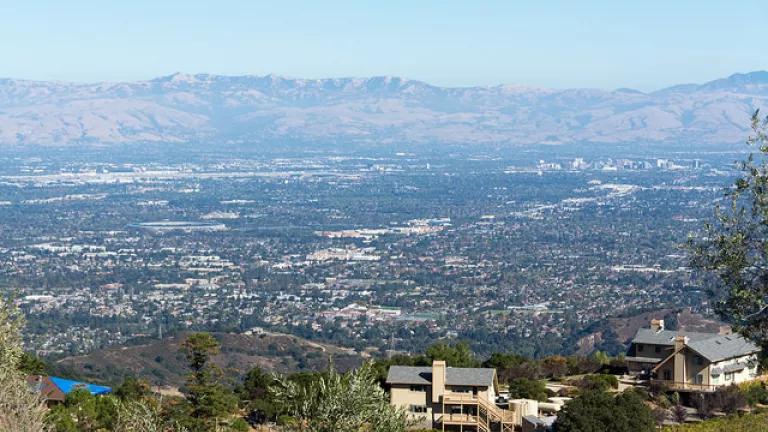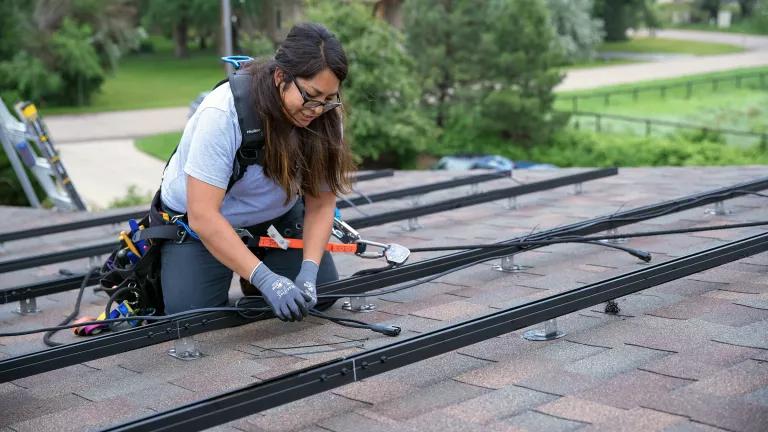Westward, ho! New City Policies Address Building Performance

Western cities made major progress in building energy efficiency, with a recent flurry of activity in building performance policies. The land of big skies, big dreams, and yes, many big buildings got new city policies on the map. Fort Collins, Colorado; Reno, Nevada; and San Jose, California all recently joined the ranks of cities in the United States with building performance policies aimed at driving energy efficiency improvements in large existing buildings. They join 25 other communities with similar ordinances, bringing the total number of benchmarking communities to 27 cities and 1 county, and providing more models for cities with similar ambitions around the country.
The work done in these cities was supported by the City Energy Project, a national initiative to create healthier and more prosperous American cities by improving the energy efficiency of buildings. Working in partnership with cities, the Project, co-led by NRDC and the Institute for Market Transformation, supports innovative, practical solutions that cut energy waste, boost local economies, and reduce harmful pollution. In developing these solutions, Fort Collins, San Jose, and Reno worked with building owners, utilities, environmental groups, energy efficiency practitioners, and others, to develop policies that meet the needs of their local context while addressing issues of global concern.
Some of the details:
Fort Collins
On December 4, 2018, the Fort Collins City Council voted to require annual benchmarking and transparency of energy and water use in commercial and multifamily buildings 5,000 square feet and larger through their new Building Energy and Water Scoring Program. To develop an ordinance that was tailored to the unique characteristics of Fort Collins, the city worked in partnership with Fort Collins Utilities to conduct a robust stakeholder engagement process over two years that incorporated feedback from a wide range of community members.
Benchmarking requirements in Fort Collins will phase in between 2019 and 2023, beginning with buildings over 20,000 square feet. By including all buildings 5,000 square feet and larger, Fort Collins has established one of the lowest thresholds for such a policy in the U.S., covering nearly a third of the square footage of buildings in the city and over half of the total electricity provided to the city by their utilities.
San Jose
San José’s City Council voted on December 11, 2018, to adopt the Energy and Water Building Performance Ordinance, which requires large commercial and multifamily buildings over 20,000 square feet to track energy and water use, and for low-performing buildings to take commonsense actions to improve energy and water efficiency. The ordinance builds upon California Assembly Bill 802, a 2015 law that created a statewide benchmarking and transparency policy for buildings larger than 50,000 square feet in size. City staff engaged with more than 100 individuals and 50 organizations in developing the ordinance and will continue to engage in extensive public outreach and engagement in the implementation stage.
In addition to requiring annual benchmarking and transparency for energy and water use, San José’s ordinance establishes a system for improving the energy and water efficiency of buildings that don’t meet set performance standards. Building owners have a flexible menu of performance improvements to choose from, including conducting an audit of energy and water use, retuning the building’s operations to improve efficiency, or another of a slew of City-approved actions. Buildings over 50,000 square feet will begin reporting benchmarking information on May 1, 2019; buildings over 20,000 square feet will follow on May 1, 2020. Buildings will meet performance standards for improvement starting in 2021 and 2022 for buildings over 50,000 square feet and 20,000 square feet, respectively.
Reno
On January 9, 2019, Reno’s City Council voted to create the Energy and Water Efficiency Program, which requires annual benchmarking and transparency of energy and water use for municipal buildings over 10,000 square feet and large commercial and multifamily buildings over 30,000 square feet. The program also requires low performing buildings to take periodic action—once every seven years—to help improve efficiency. City staff worked closely with stakeholders over one and a half years to evaluate options for expanding green building and energy efficiency across the city’s building stock. Over 50 organizations were invited to take part in the city’s process and to help shape the policy.
Benchmarking and transparency requirements will phase in beginning in 2019 for city-owned properties, and 2020 for private properties 100,000 square feet and larger, moving down to those 50,000 square feet and larger in 2021, and those 30,000 square feet and larger in 2022. Actions to improve performance—which include a variety of options for buildings owners and managers to choose from—will be required starting in 2026 for city-owned properties, 2028 for private properties 100,000 square feet and larger, 2029 for buildings 50,000 square feet and larger, and 2032 for buildings 30,000 square feet and larger.
Western communities have long been stewards of scarce resources. The building performance policies recently passed in Fort Collins, San Jose, and Reno are one more step in that legacy, but also demonstrate the region’s leadership in finding ambitious solutions that work across a diverse mix of communities. Universities, breweries, large tech companies, small tech start-ups, logistics firms, fire departments, hospitals, and more: all benefit from better understanding and using energy and water consumption data. In turn, residents and local businesses are better empowered to make informed decisions that take into account anticipated costs of the spaces they plan to rent and buy. Because of the many benefits to the many different actors within benchmarking communities, these policies enjoy robust local support. And even more encouraging, the passage of these policies further adds to the swell of support for local climate action in addressing global carbon pollution.




